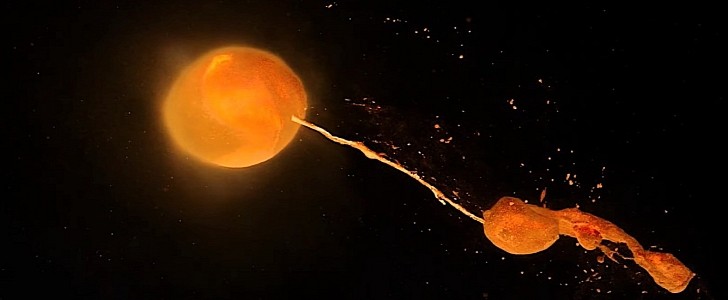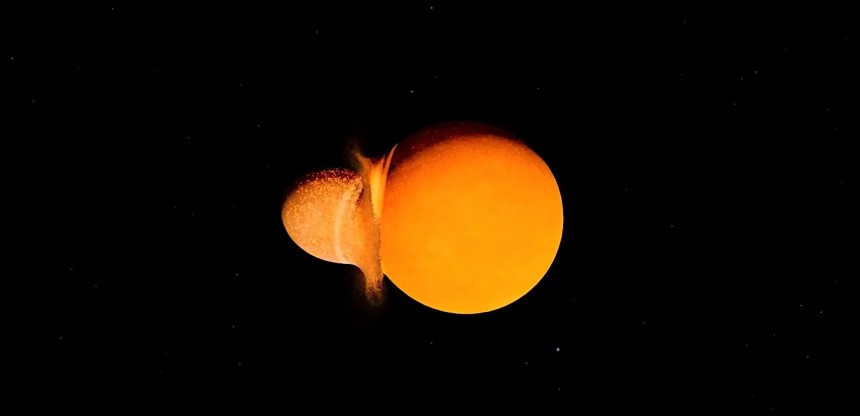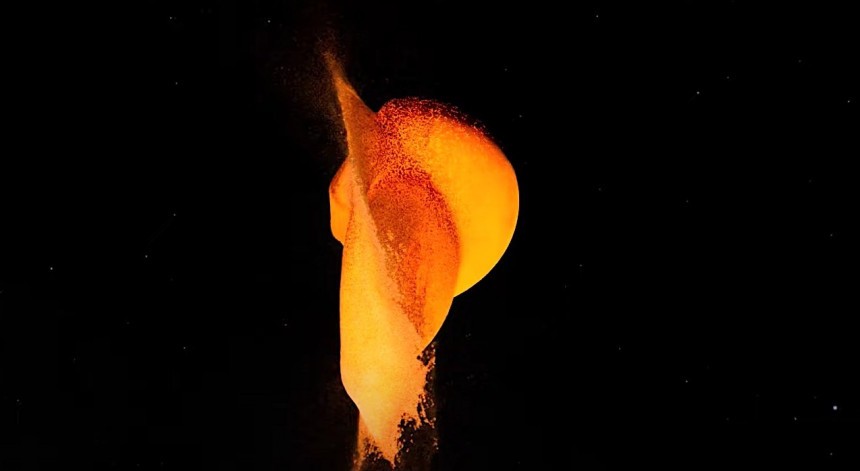As far as we know, the exact origins of the Moon are a total mystery. Every civilization in recorded history has its own theory. Still, NASA and the science community at large are in search of more concrete facts than what can be derived from ancient religious scriptures. What they're finding could change our entire understanding of how the planets formed.
As reported recently, team of scientists from NASA's Ames Research Center in California, and Durham University in the UK, are applying some serious computing power to find out to their best understanding just what forces were at play that brought the Earth and the Moon into eternal deadlock. Let's take a closer look, shall we? We're kind of dealing with Biblical Book of Genesis level stuff here.
The prevailing theory is that in the earliest days of proto-Earth, the planet was only a fraction of the size it would become. In the primordial days after our Sun began nuclear fusion, the gradual accumulation of gas and minerals left over from all the chaos in the inner and outer Solar System are thought to be the genesis of all the planets. Be it the inner rocky ones or the outer Gas Giants, they all find their common ancestry here, according to most experts on the matter.
But as the theory explains, there was a heck of a lot more than eight or nine of these proto-planets slingshotting around the Sun in peculiar orbits in the beginning. It's thought one of these proto-planets, roughly the size of Mars, got just a bit too close to the orbit of the infant Earth. Eventually, broadsiding the Earth and obliterating the offending protoplanet in the process.
Though still intact, the Earth was besieged by a torrent of debris from both the impacting planet and itself. What remained behind could have conglomerated together via gravity. Each microscopic particle imparting just enough of a gravitational tug on the other to pull greater bulk of the debris field into seperate entities, also giving us the Moon as it is today.
Other theories argue the Moon could have been captured by Earth's gravity after intersecting from a journey through deep space. But Lunar samples' taken back to Earth during the Apollo program striking similarity to mineral samples on Earth seem to point in their overall chemical makeup being more similar than different. But if this is indeed the case, how long did it take for the Earth and Moon to take the forms we're familiar with?
Was there a vast system of rings around the Earth in the immediate aftermath of the impact? Was the process expedient, or did it take tens of millions of years? New supercomputer simulation data seems to suggest the process took place not over the course of eons, but perhaps just a matter of hours. Through the simulation, we find that the impact between the two colossal objects causes two bespoke debris fields to develop.
As the two piles of ejecta coagulate into two entirely separate entities, there was indeed a spattering of material separate from the two main masses. But something you won't find in the simulation is any grand ring system like you'd find with the outer Gas Giant planets. Instead, the smaller of the two masses rapidly intakes what remains of the ejecta and compacts it into a spheroid object roughly one-sixth the size of the Earth.
Based on the calculations of the mass of the Earth and the colliding object, with the gravitational forces between the two taken into account, data suggest this process happened in the astrophysics equivalent of a split second. If true, it could explain a number of things about the Moon's nature.
For instance, if vast reserves of Helium-3 and frozen water ice are found when NASA lands humans on the Moon with the Artemis program, the reasons why could be traced to the very formation of the Earth and Moon themselves. It doesn't take a rocket scientist to understand why that's important.
The prevailing theory is that in the earliest days of proto-Earth, the planet was only a fraction of the size it would become. In the primordial days after our Sun began nuclear fusion, the gradual accumulation of gas and minerals left over from all the chaos in the inner and outer Solar System are thought to be the genesis of all the planets. Be it the inner rocky ones or the outer Gas Giants, they all find their common ancestry here, according to most experts on the matter.
But as the theory explains, there was a heck of a lot more than eight or nine of these proto-planets slingshotting around the Sun in peculiar orbits in the beginning. It's thought one of these proto-planets, roughly the size of Mars, got just a bit too close to the orbit of the infant Earth. Eventually, broadsiding the Earth and obliterating the offending protoplanet in the process.
Though still intact, the Earth was besieged by a torrent of debris from both the impacting planet and itself. What remained behind could have conglomerated together via gravity. Each microscopic particle imparting just enough of a gravitational tug on the other to pull greater bulk of the debris field into seperate entities, also giving us the Moon as it is today.
Was there a vast system of rings around the Earth in the immediate aftermath of the impact? Was the process expedient, or did it take tens of millions of years? New supercomputer simulation data seems to suggest the process took place not over the course of eons, but perhaps just a matter of hours. Through the simulation, we find that the impact between the two colossal objects causes two bespoke debris fields to develop.
As the two piles of ejecta coagulate into two entirely separate entities, there was indeed a spattering of material separate from the two main masses. But something you won't find in the simulation is any grand ring system like you'd find with the outer Gas Giant planets. Instead, the smaller of the two masses rapidly intakes what remains of the ejecta and compacts it into a spheroid object roughly one-sixth the size of the Earth.
Based on the calculations of the mass of the Earth and the colliding object, with the gravitational forces between the two taken into account, data suggest this process happened in the astrophysics equivalent of a split second. If true, it could explain a number of things about the Moon's nature.









